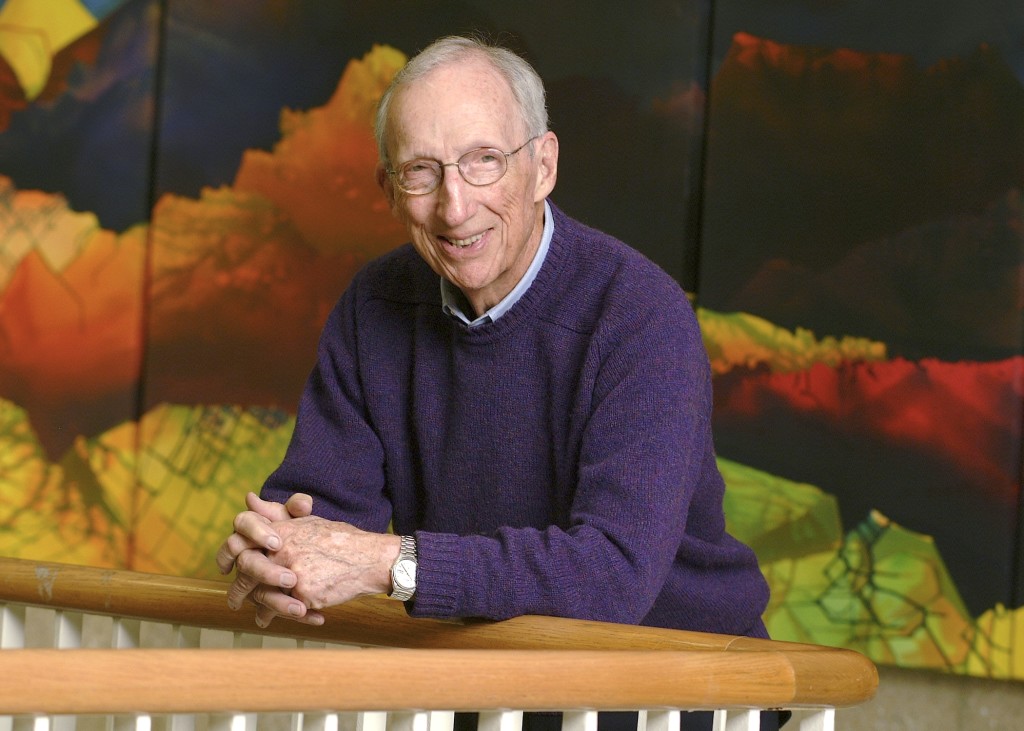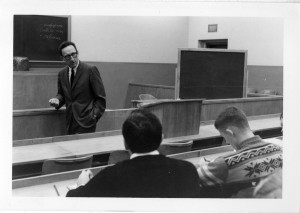Cultural property conference honors legacy of SLS Professor John Henry Merryman, architect of the field

Stanford, Calif., November 11, 2013 – Stanford Law School recently welcomed scholars of art and law to celebrate the contributions of John Henry Merryman, Nelson Bowman Sweitzer and Marie B. Sweitzer Professor of Law, Emeritus, to cultural property law and international heritage policy. Merryman’s singular influence upon art law was feted at “Thinking About Cultural Property: The Legal and Public Policy Legacies of John Henry Merryman.” The weekend conference covered topics as diverse as the collection of tribal art and legal protections for art in the digital world.
The clear consensus among conference attendees was that Merryman’s impact upon art law is difficult to overstate. Merryman is “for all practical purposes, the founder of the field,” said Paul Brest, Professor of Law, Emeritus, and former Dean of SLS. Brest added that although Merryman officially retired many years ago, he remains so active in teaching and scholarship that he hardly seems retired.
Merryman was first drawn to art by “forces too powerful to resist”—his wife, Nancy, who was a successful international art dealer, and their neighbor, Albert Elsen, a close friend and professor of art at Stanford. After agreeing to teach a course about art and the law at SLS in the early 1970s, Merryman and Elsen faced an immediate challenge. Since the very idea of the course was so innovative, there was no existing curriculum to rely upon.
“We had to build the whole infrastructure” of the course, Merryman said. What they built was contained in their widely-adopted course book, Law, Ethics and the Visual Arts, which is currently in its fifth edition and set for an upcoming sixth edition.

Their effort was unquestionably successful, and was especially beneficial to SLS’ students. Because learning the substance of art law and making the necessary connections in the field are both challenging, “getting into this world is not at all routine,” according to Mark Kelman, James C. Gaither Professor of Law and Vice Dean at SLS. “John has always been one of the leading experts in the world … and could expose students to issues on the ground,” as well as introducing those students to his own invaluable contacts, Kelman remarked.
With the conference set to begin, Merryman identified his hopes for cultural property law going forward. Having coined the phrase “Preservation, Truth, and Access,” Merryman indicated that scholars and practitioners in the field must be mindful of three policy considerations. First, artifacts of our cultural heritage must be protected. As Merryman said, “whatever happens, it ought to be done in a way that preserves the art.” Second, preservation efforts must allow scholars continuing access to artworks. Finally, the public must have reliable access to artworks in order to enjoy them.
Merryman also invoked the contrast between cultural nationalism and cultural internationalism. Under the cultural nationalism theory, cultural property always belongs to its country of origin. Cultural internationalism, however, holds that cultural property belongs to all peoples.
“When pushed to the extreme, cultural nationalism is deplorable,” Merryman warned.
Merryman advised that the best approach to dealing with matters of cultural property is to engage in critical thinking and avoid the temptation to make decisions based on emotion.
“Everyone knows how we feel, but how should we think?” he posited.
While Merryman’s dedication to the legal and policy aspects of cultural property law is as robust as ever, he clearly remains interested in art in its own right. Suggesting that art represents something fundamental about the human experience, Merryman observed that art is “part of our cultural heritage—it helps tell us who we are, where we come from.”
Read more about Merryman’s life and work in this Stanford Lawyer feature.
About Professor John Henry Merryman An internationally renowned expert on art and cultural property law and comparative law, John Henry Merryman continues to teach and publish prolifically, while now in his tenth decade. He has received numerous international prizes and honors, including the Order of Merit of the Italian Republic and honorary doctorates from Aix-en Provence, Rome (Tor Virgate), and Trieste, and has been celebrated in two Festschiften: Comparative and Private International Law: Essays in Honor of John Henry Merryman on His Seventieth Birthday and Legal Culture in the Age of Globalization: Latin America and Latin Europe. In 2004, Professor Merryman received the American Society of Comparative Law’s Lifetime Achievement Award “for his extraordinary scholarly contribution over a lifetime to comparative law in the United States.” He also has been both a Guggenheim Fellow and a Fulbright Research Professor at the Max Planck Institute. Before joining the Stanford Law School faculty in 1953, Professor Merryman was a member of the faculty at Santa Clara University.
About Stanford Law School
Stanford Law School is one of the nation’s leading institutions for legal scholarship and education. Its alumni are among the most influential decision makers in law, politics, business, and high technology. Faculty members argue before the Supreme Court, testify before Congress, produce outstanding legal scholarship and empirical analysis, and contribute regularly to the nation’s press as legal and policy experts. Stanford Law School has established a new model for legal education that provides rigorous interdisciplinary training, hands-on experience, global perspective, and focus on public service, spearheading a movement for change.
